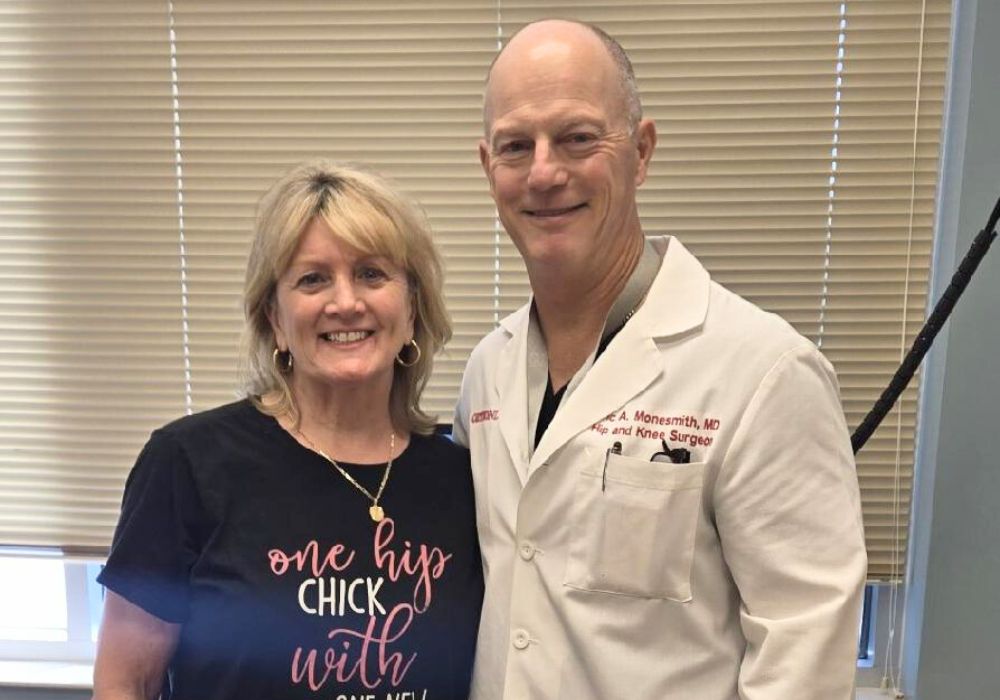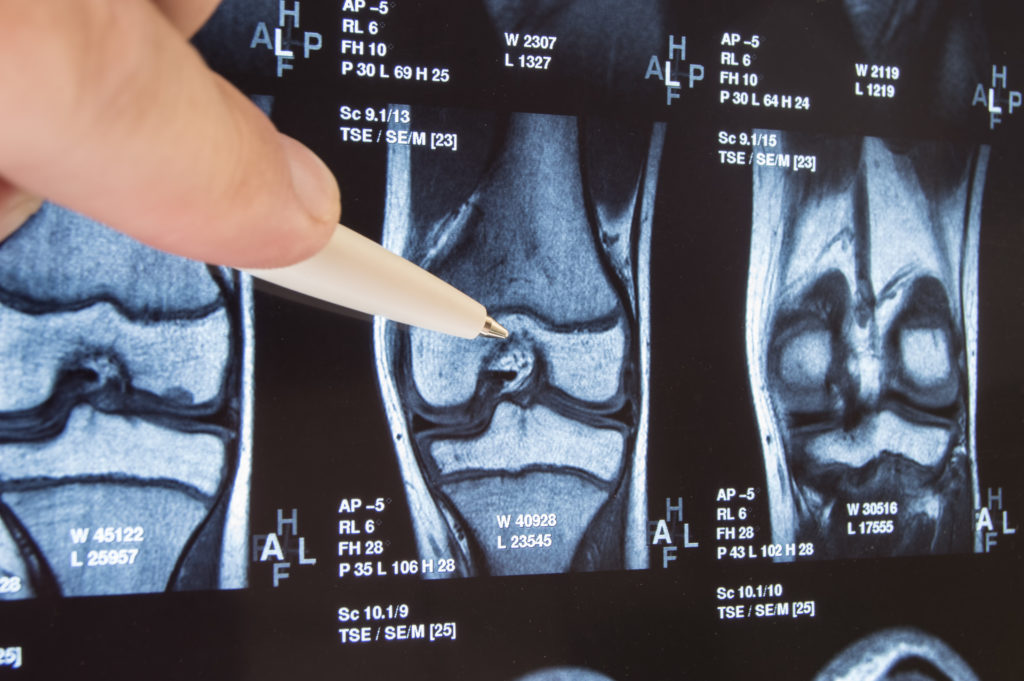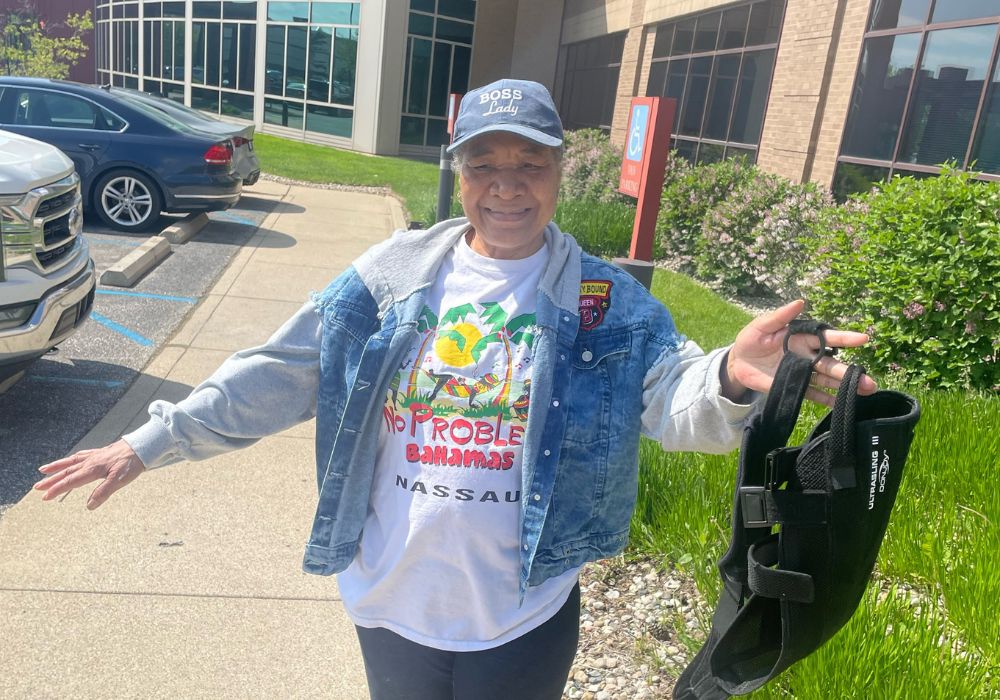This post is part of the Ultimate Guide to Total Hip Replacement
All phases of total hip replacement are important. These include hip replacement recovery, rehabilitation, anesthesia and perioperative pain management, post-operative pain management and the surgical technique.
Patients do best when they understand what is expected of them after surgery, as following instructions and protocols is very important. Your physician will provide specific instructions but there are general guidelines to follow.
24 hours after surgery
Within 24 hours of your surgery, a physical therapist will ask you to stand up and take a few steps with a cane or walker. Oftentimes, this is the day of your actual surgery. Patients who walk or stand on their new hip quickly after surgery are more likely to recover faster than patients who do not as this decreases the likelihood of complications.
Your pain will be continually monitored and controlled with various pain-relief methods to make sure you are comfortable during your hospital stay. Most patients will be discharged when they are able to get in and out of bed, walk short distances, have increased mobility in their hip and have their pain under control.
“I do the direct superior hip surgical approach and my patients are usually walking with a cane, walker or crutches four hours after surgery. The surgery itself takes me about 40 minutes. As a result, my patients are almost always safe to go home the day after surgery,” said Dr. Frank Kolisek, OrthoIndy total joint specialist.
Returning home
Typically hip replacement patients are able to go directly home one to two days after surgery. Some patients may be discharged to a rehabilitation facility if they are not safe to return home. Our occupational and physical therapists assist the surgical and medical teams with this decision.
Most patients can resume most activities by six weeks after surgery. If you had both of your hips replaced at the same time your hospital stay and recovery may be longer.
“With our recent changes in anesthesia and post-operative pain management in combination with the direct superior approach, I often have to slow my hip patients down as they actually start doing too much too soon,” said Dr. Kolisek.
“I constantly have to remind them that we have to let the soft tissues heal and the bone to grow to the hip prosthesis to stabilize it for long-term function and this is most important during the first month after surgery. It is at this time that I let my patients basically start doing what they want except for jumping and repetitive running.”
When you are at home you will need to continue doing your his strengthening exercises and monitoring your pain. Often, patients will take pain medicine three or four times a day for the first three weeks and many patients start weaning off the pain medicines over the next three weeks. Each patient is different, but you will eventually be off your pain medication and return to your normal lifestyle four to six weeks after surgery.
Driving
Patients who had their non-driving legs operated on may return to driving when they are off pain medication and can get in and out of the car without assistance. Patients who had their driving leg operated on may drive as soon as they feel safe, which is usually three or more weeks after surgery. Again, they must be off the pain medication and have regained strength in their hip.
Going back to work
If you work at a sedentary job, you may be able to return to work three to six weeks after surgery. If your job requires frequent standing or bending and lifting it may take you up to eight weeks to return to work. If you have a more labor-intensive job, your total joint specialist will work with you on a timeline to return as it could be as long as eight to ten weeks.
Returning to an active lifestyle
Sometimes, patients are actually more active after their hip replacement because they are finally able to move around without pain. Swimming, cycling, slow-paced tennis, hiking and golfing are safe to return to and encouraged when your physical therapy is complete.
Jogging, basketball, football and other high impact activities are not encouraged as they put pressure on your new hips. Talk with your total joint specialist about your athletic goals before surgery.
Watch video: Exercises after hip replacement surgery
A better quality of life
Once you return home and complete your physical therapy, you will find yourself adjusting to your new hip and enjoying a more mobile lifestyle. Hip replacement recovery is usually pretty fast and many patients feel like it gave them their life back.
“Often times my patients will say that the pain of the hip surgery is not much worse than the arthritic pain they had prior to surgery,” said Dr. Kolisek. “Patients notice a difference the first time they walk with their new hip. It is because of this that hip replacement patients are some of the most satisfied patients that I take care of which is very gratifying.”
Learn more about joint replacement surgery at OrthoIndy.

Schedule an appointment
Your well-being is important to us. Click the button below or call us to schedule an appointment with one of our orthopedic specialists. If your injury or condition is recent, you can walk right into one of our OrthoIndy Urgent Care locations for immediate care. For rehabilitation and physical therapy, no referral is needed to see one of our physical therapists.





